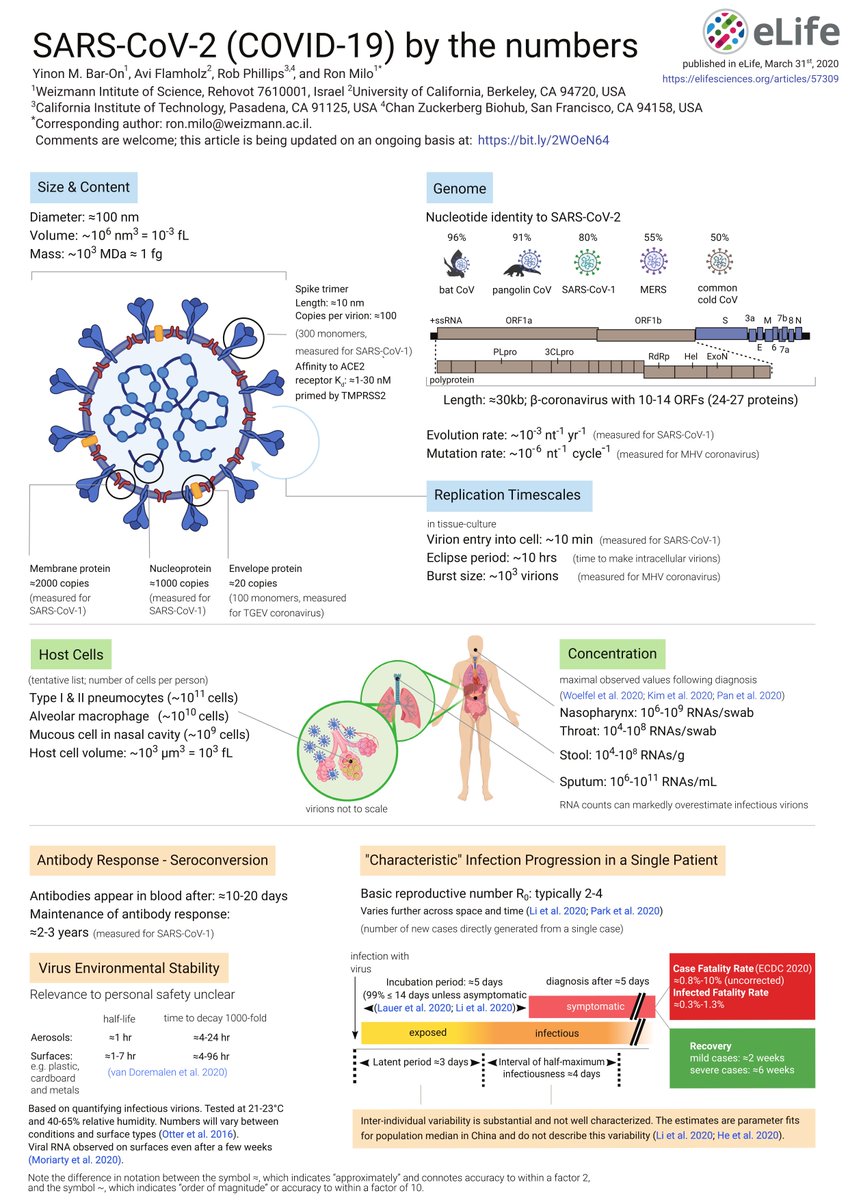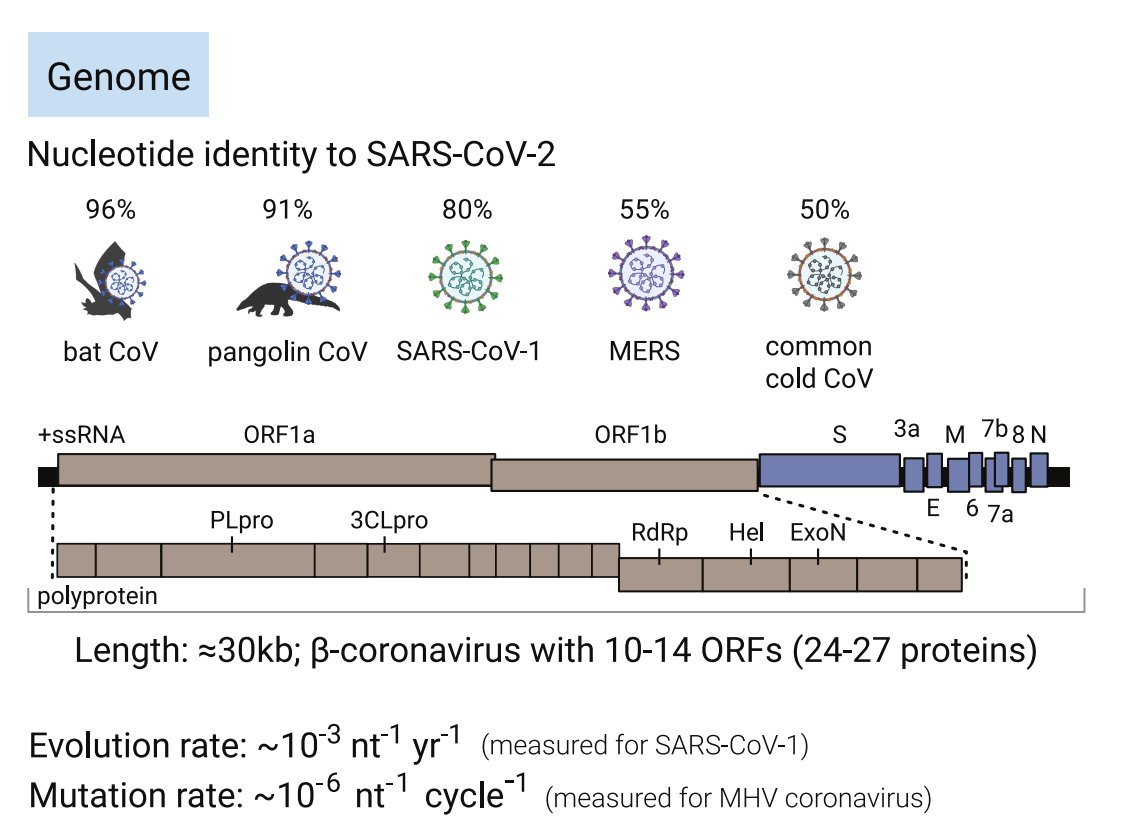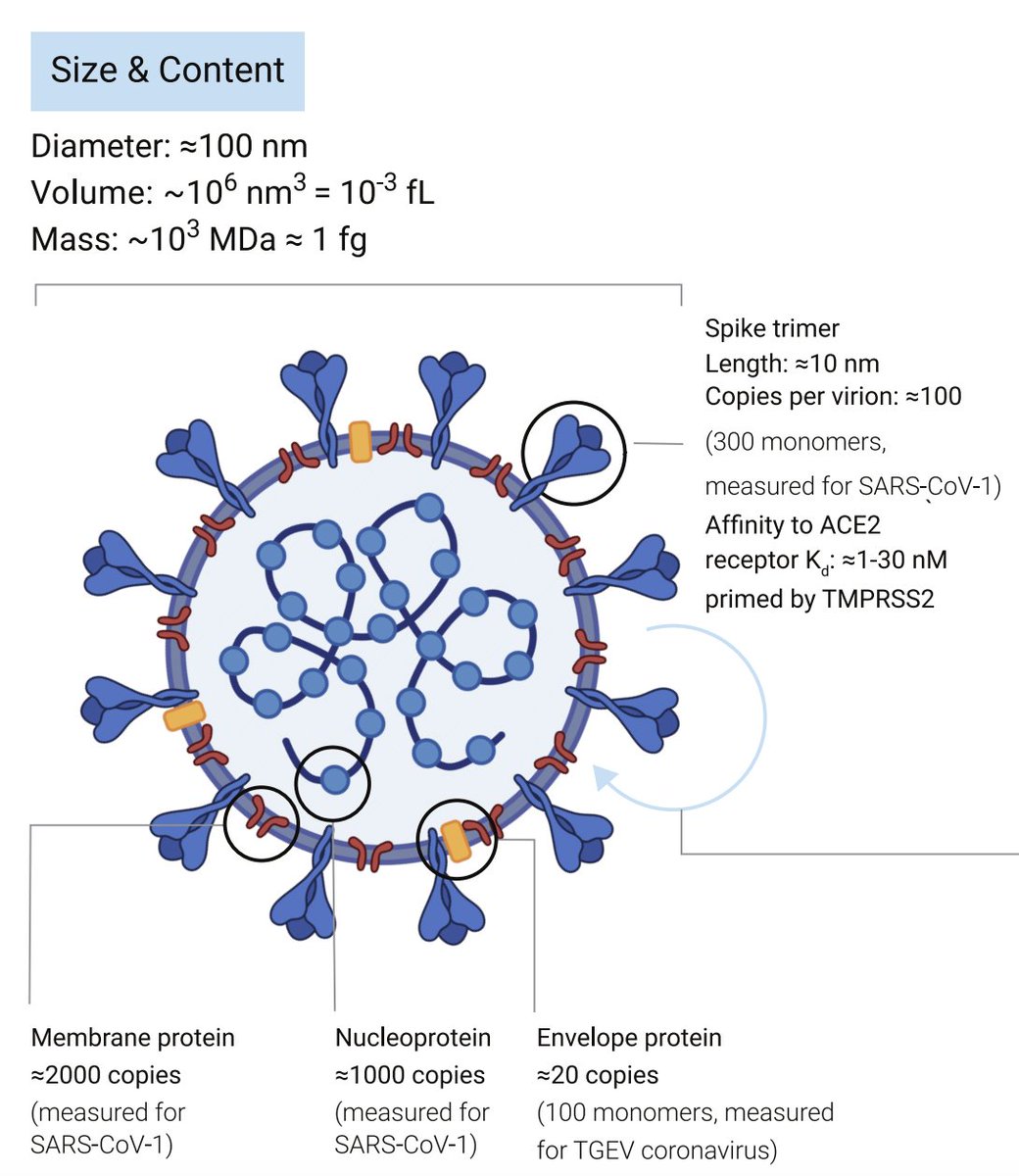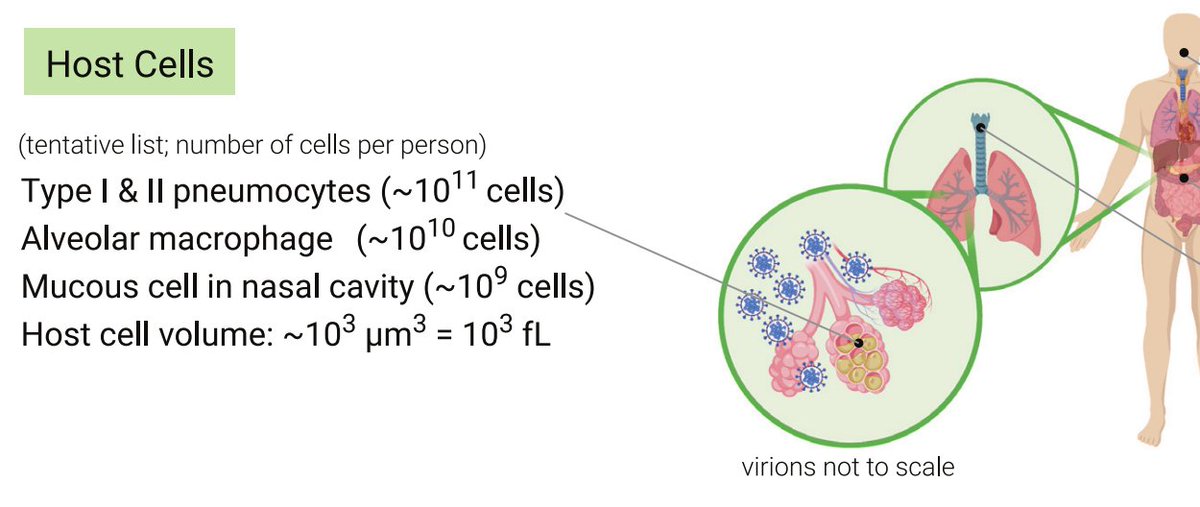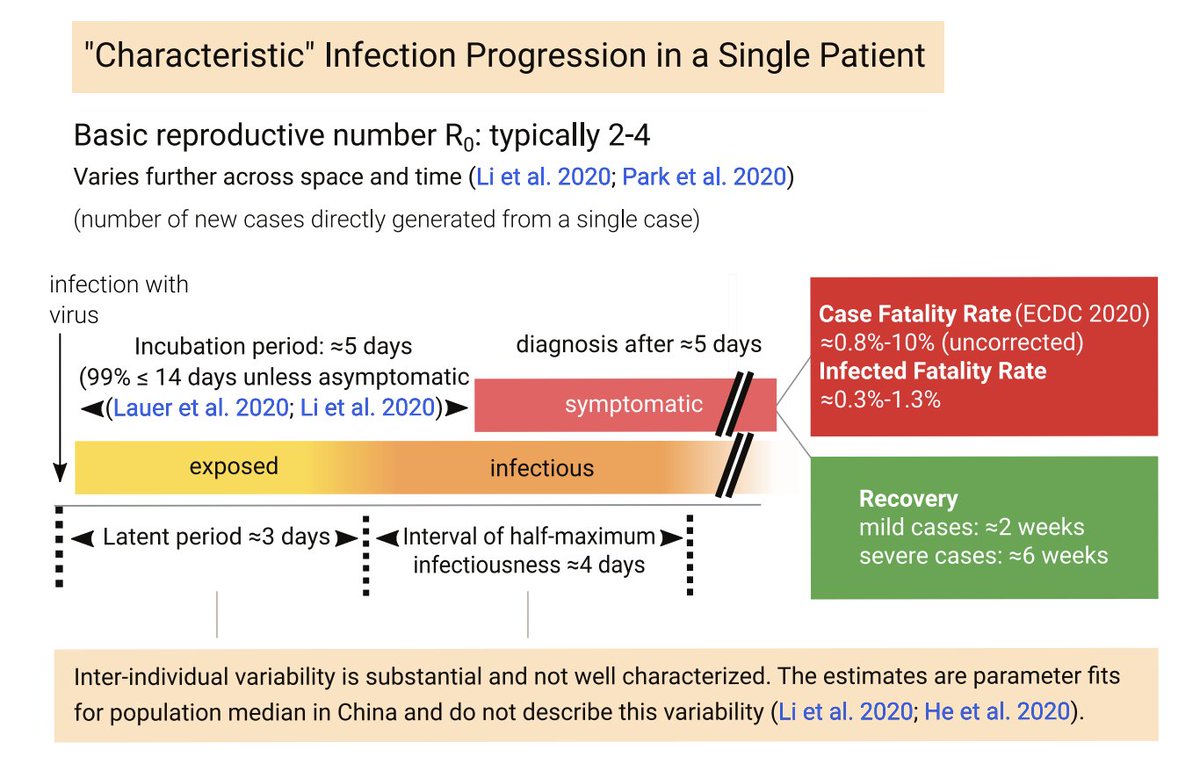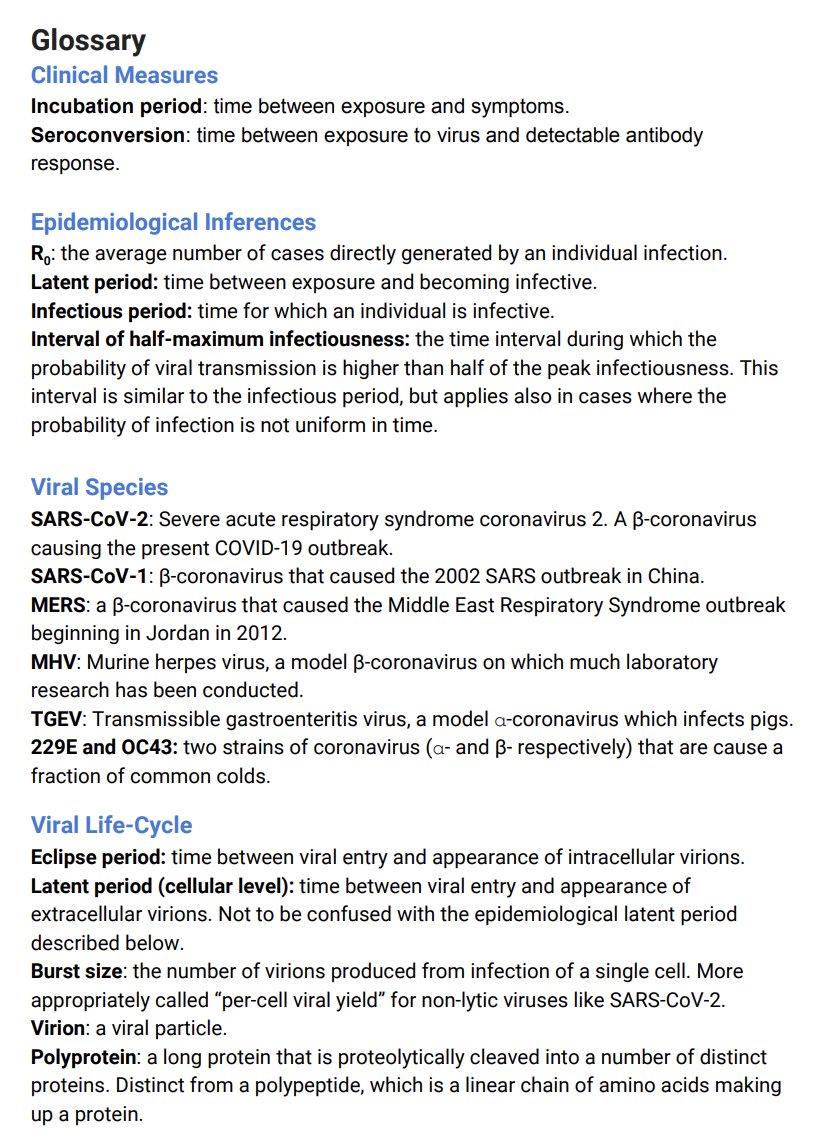Our new “quantitative snapshot” of SARS-CoV-2 just out in @eLife. We combed the literature for reliable and useful numbers about the virus, interactions with human cells, and disease progression. Check it out: https://split.to/I51uWQJ ">https://split.to/I51uWQJ&q...
SARS-CoV-2 is a betacoronavirus, and part of the coronavidae family. These viruses have the biggest genomes of any known RNA viruses (≈30 kb). Coronaviruses have very low mutation rates for RNA viruses (≈1e-6 mutations/nt/cycle) because of a proofreading mechanism.
The viral particle is ≈100 nm in diameter and has a membrane envelope derived from host cell lipids. The most abundant structural proteins are a nucleoprotein (1000 copies) that packages the genome and a "spike" protein (300 monomers) that binds the human cell receptor ACE2.
SARS-CoV-2 can infect the human respiratory system, and is thought to enter pneumocytes (type I and II, 1e11 cells) and alveolar macrophages (immune cells, 1e10 cells). With a volume of only ~1e-3 fL, the virus is a million times smaller than the cells it infects (~1000 fL).
In cell culture, it takes these viruses about ~10 minutes to get into cells. They can make new virions in ~10 hrs after cell entry, and they might make up to 1000 each cycle.
We describe a “typical” individual time course of infection, but it is important to understand that there is large inter-individual variation.
Once a person becomes infected, there is an “incubation period” (≈5 days) before symptoms. It is possible to transmit the virus before symptoms (“pre-symptomatic transmission”), and the period of peak infectiousness is roughly 4 days long.
Diagnosis usually occurs after the onset of symptoms (≈5 days) which is typically after peak infectiousness.
R0 quantifies the number of secondary infections the average infected person generates. This value is inferred from epidemiological models and varies substantially between studies from 2-4. R0 > 1 implies that the virus is growing exponentially.
As you can tell from this thread, there are many caveats associated with these numbers. In the accompanying text, we give clear definitions and “back-of-the-envelope” calculations to help put these important and timely numbers into context.
Thanks to @eLife and @mbeisen for a fast and highly professional review process in these challenging times.
Thanks also to the > 50 people who gave comments and edits while on lockdown. You don’t all have twitter, but we tried to include everyone.

 Read on Twitter
Read on Twitter